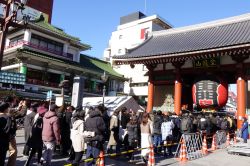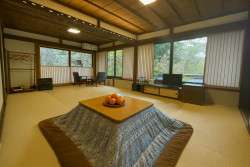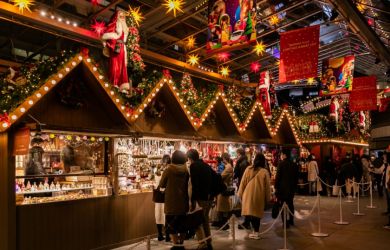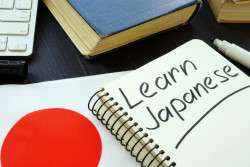
March 24, 2005
The High Life
Squeeze a last bit of fun out of winter in the mountains of Nagano
By Metropolis
Originally published on metropolis.co.jp on March 2005

Photos by Peter McGurk
The all-encompassing dark of a mountain night cloaked the village, and snow fell lightly on its narrow, winding alleys. Steam rose from the volcanic springs simmering under the streets and drifted listlessly on the night air. An old man in a conical straw hat labored to clear snow from his well-kept storefront, and trickles of yukata-clad villagers flitted through the streets in scenes no doubt repeated through the ages. Tonight, as every night for hundreds of years, the onsen around town were doing brisk business.
It was a fine time for an evening stroll through the twisting, age-worn streets of Nozawa Onsen. The village boasts 13 free public bathhouses, and whether or not you’re heading towards one, the streets after dark ooze atmosphere. Tradition lives on here, as each of the baths is looked after by yunakama, or societies of villagers living nearby. From 6am-11pm in winter, all are welcome to use the baths, though the facilities are markedly more primitive than some onsen I’ve been to previously.
For starters, the Oyu bathhouse has no showers, and there wasn’t a partition between the bathing and changing areas. The lack of showers, however, didn’t give me the excuse to jump straight into the bath. Wooden bowls lying around the floor needed to be filled with bathwater, then it was a case of kneeling uncomfortably on the stone floor and washing and rinsing off.
The bath was a welcome haven from all the feelings of awkwardness, and happily, it wasn’t long before all my cares were slipping away, up into the wintry night air on the rising vapors. One onsen not for bathing is the Ogama spring in the center of the village. There, water temperatures sometimes rise to 90ºC (194ºF), meaning locals can occasionally be spotted using it to boil eggs and vegetables.

The baths seem even more welcome because they’re situated at the bottom of the mountain where the legendary Austrian Hannes Schneider first introduced skiing to Japan. In 1930, the Japanese government offered him $10,000 to come here and explain his then-revolutionary ideas. (For example, Schneider thought that it was better to crouch on downhill slopes than stand up straight like a flagpole.) Today, Nozawa Onsen is one of the oldest and largest ski resorts in Japan, having 24 lifts and 20 courses tilted slightly towards beginners. For snowboarders, there’s a small park with a halfpipe and a jump, but two of the more challenging runs—the Kandahar (all) and the Yamabiko (most)—cater to skiers.
Plodding along with all my gear, I quickly realized that the actual slopes were quite a distance from the center of the village—and a steep climb to boot. Sustenance was needed. Oyaki, a Nagano specialty of steamed cakes that are stuffed with seasonal ingredients, and Nozawana Zuke, pickles made from a local vegetable, made for a tasty, cheap and filling before- or after-ski snack. At less than ¥200 each, they should be sampled at least once at the shops lining the way to Yu Road—a moving 300m walkway that whisked me from the outskirts of the village to the bottom of a rather steep-looking beginners’ slope.
Any second thoughts I’d had about buying a lift pass were quickly dispelled once at the top. Looking down, the run actually seemed rather doable and even pleasant. With my recent skiing experience, I was able to negotiate it rather well, though my companion, skiing for the first time in years, found himself sprawled in the snow over and over again. There’s a gondola to the summit nearby, and the ski down was a wonderful way of building confidence and taking in the fine views out over the valley.
Nozawa Onsen is a rarity in Japan—a place that’s managed to retain most of its tradition and charm. My advice is to see the village before the ambience and atmosphere is destroyed by the kind of charmless megahotel that’s found the world over wherever people ski.
The easiest way to Nozawa Onsen is by shinkansen from Tokyo to Nagano, about 1hr, 30min. A one-way ticket is ¥7,970. Change to the Iiyama line for Togari Nozawa Onsen, roughly 1hr. A one-way ticket is ¥740. Then it’s a 10min, ¥300 bus ride from the only stop outside the station to Nozawa. Lift passes are ¥3,000 for a half-day, ¥4,300 for a full day, ¥8,200 for two days, and ¥11,000 for three days. Try the Minshuku Association (02-6985-2068) or the Ryokan Association (02-6985-2056) for accommodations. This year’s ski season ends May 8.
[geo_mashup_map]







